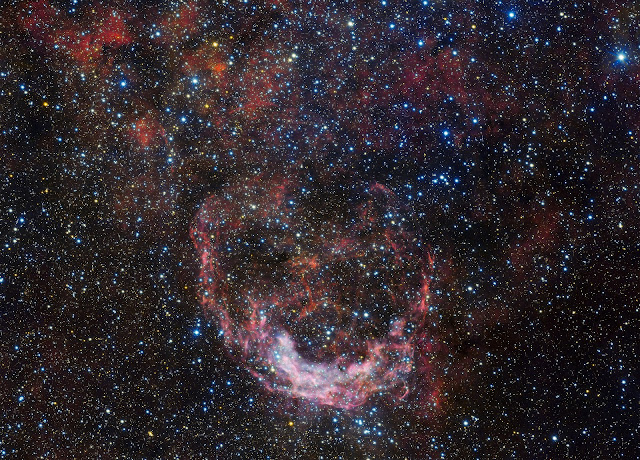Nebula NGC 3199 in Carina | European Southern Observatory
This image shows a crescent-shaped cocoon of gas and dust—a nebula known as NGC 3199, which is located 12,000 light-years away from Earth. It appears to plough through the star-studded sky like a ship through stormy seas. This imagery is very appropriate due to NGC 3199’s location in Carina —a southern constellation which is named after the keel of a ship!
NGC 3199 was discovered by British astronomer John Herschel in 1834 as he compiled his famous catalog of interesting night sky objects. The nebula’s bright crescent feature is now known to be part of a much larger but fainter bubble of gas and dust.
The nebula contains a notable star named HD 89358, which is an unusual type of extremely hot and massive star known as a Wolf-Rayet star. HD 89358 generates incredibly intense stellar winds and outflows that smash into and sweep up the surrounding material, contributing to NGC 3199’s twisted and lopsided morphology.
Credit: European Southern Observatory (ESO)
Release Date: July 30, 2018
#NASA #ESO #Astronomy #Space #Science #Nebulae #Nebula #NGC3199 #Star #HD89358 #WolfRayetStar #Carina #Constellation #MilkyWayGalaxy #Cosmos #Universe #Telescope #Observatory #Chile #Europe #STEM #Education

No comments:
Post a Comment